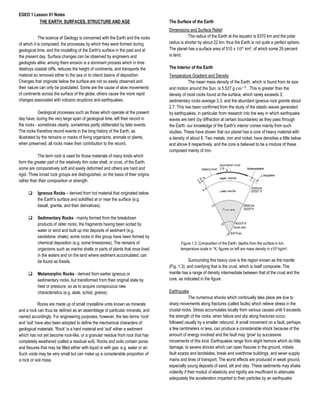This document provides an overview of geology and earth science concepts. It discusses the structure of the Earth, including its core, mantle, and crust. It describes three main rock types - igneous, sedimentary, and metamorphic rocks. It also summarizes plate tectonics theory and how the movement of tectonic plates has caused continental drift over geological time. Finally, it provides a brief overview of earthquakes and seismic wave propagation.











































